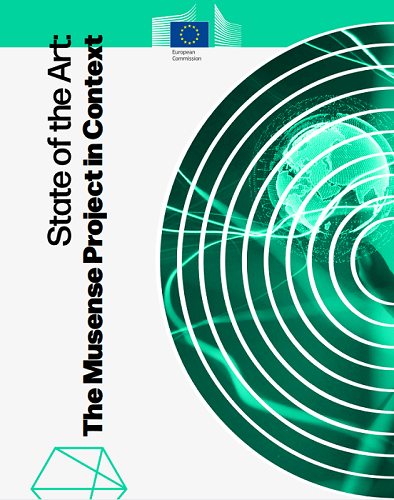State of the Art: The Musense Project in Context (PR1)

The Musense Project was designed to accomplish two equally significant goals or purposes.
The first is to gather as much information as is necessary to be able to draw as comprehensive a picture of how evolving technological means and processess are and will affect the delivery and reception of virtual performance. Virtual Reality (VR) as a concept, provides the contextual background upon which the Musense Project rests. By having this as the model, not only are we able to provide the necessary information about VR, but also allow the project researchers to achieve the second of the two purposes, that being the opportunity to shape the very thought that might produce new and or added value in the creation and evolution of virtual reality itself. Often, the creative process may be viewed in two parts. The first is what is, the second being what is possible. The second of these two parts is perhaps the more speculative but certainly the one that transforms imagination into reality. As is well known, many great inventions are driven by impossible visions or seemingly unacheivable goals.
This report strives to present various aspects of the concept of Virtual Reality and how these relate to both the music world and greater society. The survey that appears as the second item in the report is a stock taking of the understanding, readiness and adoption of virtual technology project partners and stakeholders actually have. It provides a small but realistic picture of where we find our institutions and ourselves in relation to the idea of VR. It tests four main areas, the current situation, current practices, organizational preparedness, and an open-ended question section that explores how musician envision the VR concept.
The third part explores the social ramifications of VR. It does so from as many perspectives as possible because the musical society is comprised of many parts each of which is directly affected by this revolutionary technology. These include the creators, the promoters, the producers, the disseminators, aand the receivers. The effects of VR have artistic, technological,financialpsychological and sociological effects on each of the categories previously mentioned. Thus, the discussion is broken down into each social category of the musical realm. The supplemental materials of the fourth section are given to amplify the scope of the second part in providing further materials not covered by part two.
Section five provides a series of case studies that aims to clarify how we as a collective view and define the whole concept of cyber and then how this creates relations to the musical realm. The resultisasurprising set of new possibilities that amplify both the quality and variety of thought that might be entertained with regards to both components.Part six delves into how The Musense project envisions how concepts and technologies presently used in the music industry may be used in the areas of cyber performance, long distance performance and education.
The second-to-last section is both a discussion and bibliographical resource that provides invaluable information not only on how the pandamic spurred and affected the adoption of technology but also on how the new Technologies and technological trends are evolving.The final section of the report looks at how the structure and process of Musense project relates to the 2030 Agenda set forth by the United Nations. This is done with regards to the project’s adherence and or affinity to the dictates of the agenda concerning the concept of sustainability in the broad sense as well as its narrower meaning when considering education.

